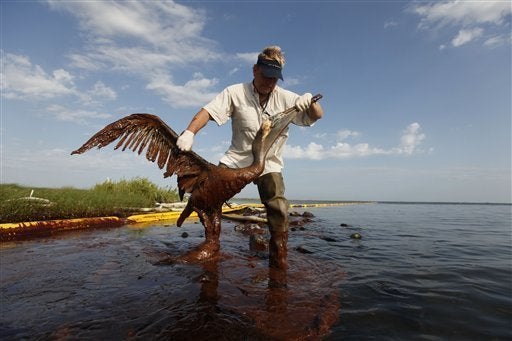
New BP air testing results were posted yesterday from April 27 – May 26 for benzene, total hydrocarbons, and 2-Butoxyethanol. There's still no information about other oil-related air toxic chemicals such as naphthalene or hydrogen sulfide, offshore.
The BP sampling plan focuses only on workers on the large ships, and appears to not include monitoring for the people on the approximately 1,500 small fishing boats helping to clean up the spill. These people are dismissed as of "Reduced Priority" on page 4 of the BP sampling plan.
Nearly 70% (275 out of 399) of offshore air samples had detectable levels of hydrocarbons and nearly 1 in 5 (73 out of 399) had levels greater than 10 parts per million (ppm), which is an EPA cutoff level for further investigation.
Six samples exceed 100 ppm, which in a previous monitoring summary was labeled as the action limit. This label appears to have been removed in the most recent summary document. No information is given on where these samples, or the four found to be between 50 and 100 ppm, were taken.
20 (5%) samples had detectable levels of benzene with measurements up to 0.5 ppm. The National Institute of Occupational Safety and Health (NIOSH) Recommended Exposure Limit (REL) is 0.1 ppm.
20% (29 out of 146) samples had detectable levels of 2-Butoxyethanol, with measurements up to 10 ppm. This range encompasses the NIOSH REL for occupational exposure to 2-Butoxyethanol of 5 ppm. The BP document cites the OSHA PEL for 2-Butoxyethanol of 50 ppm, which would not protect workers.
In fact, the NIOSH level is also not health protective enough. As Mark Caitlin just commented on one of my blogs:
The Occupational exposure limits, like OSHA and NIOSH use, assume worker exposures are limited to an 8 hour day and 40 hour week, with unexposed time the rest of the day and week. If longer hours are worked, the occupational exposure limits need to be reduced. For example, one simple method would reduce the NIOSH REL of 0.1 ppm to 0.05 ppm if 80 hour weeks are worked. Exxon did not account for this when reporting worker air sampling data in Alaska in 1989.
I'm headed to Capitol Hill today to testify at a congressional hearing on the health effects of the BP oil disaster. I'll definitely talk about the need for better worker protection from air hazards.
This post originally appeared on NRDC's Switchboard blog.
